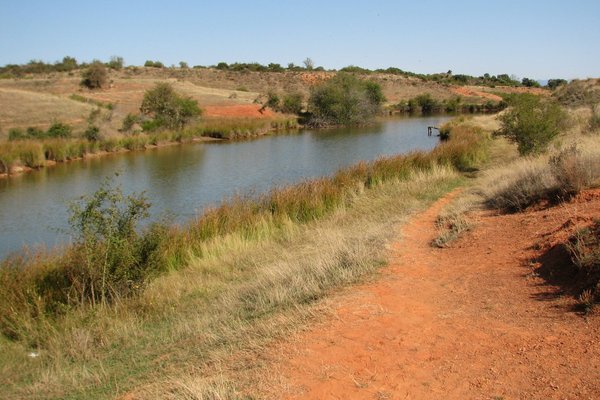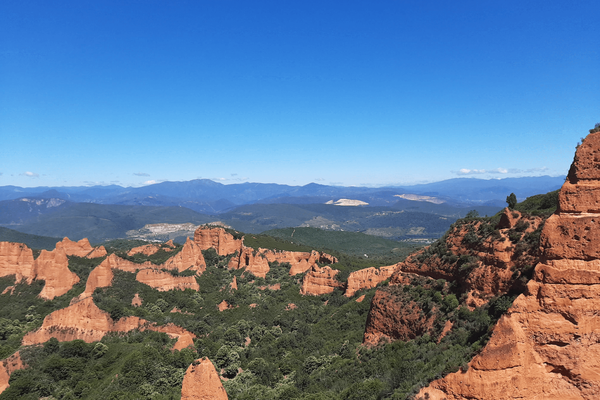Spain
Las Medulas
Las Médulas is a landscape shaped by Roman gold mining.
The Romans started exploiting the Iberian colony's resources in the second half of the first century CE. Las Médulas was their largest gold mine. The mining was done by hydraulic power that blasted the rocks away. To be able to generate enough water power, the Roman army constructed roads, dams, and canals.
Community Perspective: The classic red peak views can be had from the Mirador de Orellana. Nearby are the Galerias de Orellan, Roman tunnels, which can be visited underground. The rustic town of Las Médulas caters to tourists and there are guided tours on offer as well as hiking trails, places to stay and eat etc.
Site Info
Official Information
- Full Name
- Las Médulas (ID: 803)
- Country
- Spain
- Status
-
Inscribed 1997
Site history
History of Las Medulas
- 1997: Inscribed
- Inscribed
- Type
- Cultural
- Criteria
- i
- ii
- iii
- iv
Links
- UNESCO
- whc.unesco.org
- Official
-
- turismocastillayleon.com — turismocastillayleon.com
- Related
-
- en.wikipedia.org — Wiki on Las Médulas
All Links
UNESCO.org
- whc.unesco.org — whc.unesco.org/
Official Website
- turismocastillayleon.com — turismocastillayleon.com
Related Resources
- en.wikipedia.org — Wiki on Las Médulas
News Article
- Aug. 12, 2025 reuters.com — Wildfires threaten Las Medulas
Community Information
- Community Category
- Secular structure: Mines
Travel Information
Recent Connections
-
Perfect Inscriptions
1997 -
Badlands
"Badlands are usually found in arid, se… -
Gray Wolf
Incidental sightings, such as those rec…
Connections of Las Medulas
- History
-
-
Mentioned by Pliny the Elder
During his stay in Hispania he became familiar with the agriculture and especially the gold mines of the north and west of the country. His descriptions of the various methods of mining appear to be eye-witness judging by the discussion of gold mining methods in his Natural History. He might have visited the mine excavated at Las Medulas. (wiki)
-
- Ecology
- World Heritage Process
-
-
Perfect Inscriptions
1997 -
Controversial at inscription
Thailand, Germany and Finland voted against this 'result of human destructive activities'
-
Cultural landscape not recognized
Clearly described as a CL in 1997 extension
-
- Human Activity
- Constructions
-
-
Tunnels
At the Mirador de Orallan one can visit an old tunnel dug by the Romans whose technology for extracting the gold from the shale consisted of digging tunnels and feeding in water from canals so as to destabilize the rock until the face collapsed. -
Canals
Roman canals -
Aqueduct
Remains of seven parallel aqueducts
-
- Timeline
-
-
Built in the 1st century
second half of the 1st century AD
-
- WHS Hotspots
- Science and Technology
-
-
Mines which can be visited underground
Gold, Gallery of Ortellan (walk in along Roman tunnel)
-
News
- reuters.com 08/12/2025
- Wildfires threaten Las Medulas
Recent Visitors
Visitors of Las Medulas
- Adolfo
- Alberto Rodriguez Gutierrez
- Alexander Barabanov
- Alexander Lehmann
- Ammon Watkins
- Ana Lozano
- Anna Wludarska
- Antonio J.
- Argo
- Atila Ege
- BaziFettehenne
- Bin
- Bram de Bruin
- Bruno_Pires
- Caspar
- Catoplayer
- CeeMon
- Cezar Grozavu
- Cheryl
- Christravelblog
- Claire Bradshaw
- Clyde
- Daniela Hohmann
- David Berlanda
- Dorejd
- Elaine McArdle
- Els Slots
- Emilia
- emvcaest
- Ertai
- Eva Kisgyorgy
- Evgenii
- fabi-ddorf
- Fan Yibo
- Farinelli
- Femke Roos
- Filip Murlak
- Gernot
- Hubert
- Iain Jackson
- Ivan Rucek
- Jakob F.
- Jan-Willem
- Jarek Pokrzywnicki
- Jasam
- Jay T
- Jeanne OGrady
- Jens
- Jezza
- Joel on the Road
- Jonas Kremer
- JoStof
- Joyce van Soest
- Karito Vies
- Kbecq
- Kurt Lauer
- Lara Adler
- LaVale
- lichia
- Little Lauren Travels
- Loic Pedras
- Ludvan
- Luis Filipe Gaspar
- Maciej Gil
- Martinacurra88
- Mathijs
- MAURO PODDA PANI
- MaYumin
- MH
- M. Huineman
- Mikan22
- Mikko
- MMM
- nan
- Nihal Ege
- Patrik
- Paul Schofield
- Persian Globetrotter
- Petteri
- Philipp Leu
- Philipp Peterer
- Porcho
- Randi Thomsen
- Roger Ourset
- Roman Bruehwiler
- Samy G
- Sandmann15
- Schnitzel
- scubarrie
- Shandos Cleaver
- Solivagant
- Stanislaw Warwas
- Svein Elias
- Szucs Tamas
- Tamara Ratz
- Taotao Chen
- Tarquinio_Superbo
- Thomas Buechler
- Tim Allen
- triath
- usagi1974
- Viaje al Patrimonio
- voyager
- Walter
- Wojciech Fedoruk
- Xander Huang
- Zoë Sheng
Community Reviews
Show full reviews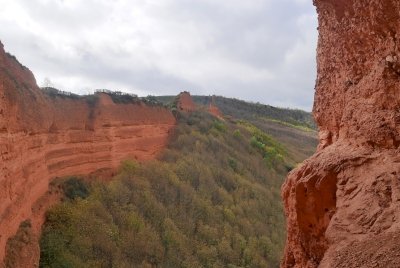
For a long time, I couldn't place Las Medulas. I had stumbled across the name repeatedly when filling out my checklist. My only association was to the famed Velazquez painting in the Prado, Las Meninas. Thanks to Jay's review, the site jumped ahead in my internal queue. Wanting to visit friends across Spain for a late autumn escape, I settled on going to the North Western Spain as part of my trip. Lesson learnt: Northern Spain in November is wet and cold.
Las Medulas is - as pointed out by previous reviewer's - not a huge area. The Romans mined the area extensively and created some stunning rock structures in the process. This is prime hiking territory (oh, Nan and his hiking), and I enjoyed my visit greatly.
There are multiple trails starting at the visitor center in Las Medulas. Essentially, you can do a ground loop visiting La Cuevona. The last bit is off limits without tour guide. Afterwards you can hike up to the Mirador of Orellan which gets you the best views of the area. It's also where the entry to the Roman mine is located (closed on Mondays).
On the upper plateau, there are ruins of an old canal the Romans used for water management. I would recommend hiking a small detour to Campo de Braña for the views and the canal. From Orellan, you can hike down to Carucedo instead of returning to Las Medulas. If hiking isn't …
Keep reading 0 comments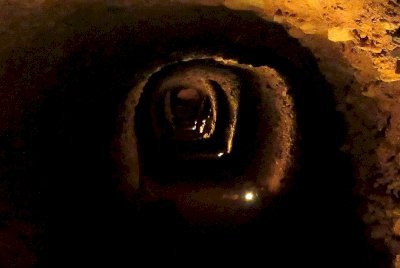
"There's gold in them thar hills", and that's exactly what brought Rome to Las Médulas in northwest Spain. The UNESCO World Heritage Site inscription is what brought me to Las Médulas some 19 centuries later, and I'm glad I made the visit, since it helped provide context to the Roman presence still visible in ruins throughout neighboring Galicia. Las Médulas was one of the most important sources of gold for the Roman empire, which used the gold in coins and jewelry. Unfortunately, the extraction came at a price to the landscape, as eroded red rocks are now ruggedly visible against the abundant vegetation in the valley below. Upon recommendations from other reviews, last week I first visited the Mirador of Orellan, which offers the best panoramic views of the mined earth. I loved the views, but I would strongly recommend site managers consider more signboards at the viewpoint explaining the Roman process of mining. What sign I did find was at the entrance to the nearby tunnels (or galerias), which I highly recommend. Here you can walk through former channels dug by Romans into the mountainsides and later flooded with water, destabilizing the hillsides and sending them in mudslides to the valley below, where gold could more easily be extracted from the rock. In addition to the tunnels at the mirador, I also recommend a visit to the museum in the town of Las Médulas, which more thoroughly explains the Roman process of mining (though it is mostly in Spanish). …
Keep reading 0 comments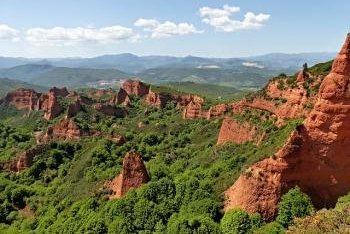
I visited this WHS in June 2016. I saw the reddish brown peaks of this Roman mine from quite a distance away while walking the Camino Frances en route to Villafranca del Bierzo. The afternoon light seems to be the best for photography and since quite a bit of walking is involved, this way you'll avoid visiting under the direct scorching sun. So after the Camino and before driving to Lugo, I spent half a day to visit this unique site. First I put Las Medulas in my GPS and surely enough I found a small interpretation centre which focuses both on the cultural as well as the natural aspects of this WHS. Having visited I cannot understand why this is not a mixed WHS. In any case, the interpretation centre provides you with information on what you can visit by car and what you can or have to visit by walk. There are three panoramic viewpoints which are worth visiting if you're not in a hurry: Mirador de Orellan, Mirador de las Pedrices and Mirador de la Frisga. Only the first one can be approached by car and you'll still have to walk 800 metres uphill on a tarmac road. There is ample parking space once you get there but the winding roads to reach this place are quite treacherous for two-way traffic. To reach Mirador de Orellan just input Orellan in your GPS and follow the UNESCO and WH signs. Mirador de las Pedrices is 3.5km further on …
Keep reading 0 comments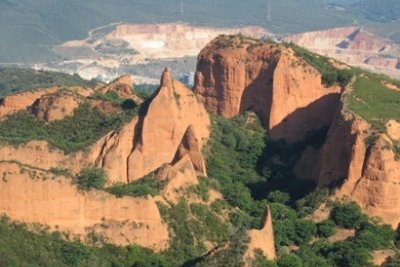
From the Mirador de Orellana I had my first look at this weird site. It takes a hike of about 800m uphill, through a wonderful green setting with lots of chestnut trees, flowers and berries. This viewpoint has the classic views, with the red peaks that you usually see in photos of Las Médulas. The mining area looks smaller than I had expected. Later I read somewhere that it is 10 square km. It looks a lot like a landscape made by erosion (like Ischigualasto/Talampaya in Argentina, or several US National Parks).
A drive down of about 10 minutes brought me to the village of Las Médulas. You have to leave your car at the village entrance, only locals are allowed to drive on. To limit damage to the site due to overexposure, only 4-wheel drives are allowed. One of the other reviewers stated that he/she got in with a regular car, maybe that was out of season as today I saw no other way in than to walk (or join a tour).
Las Médulas is a rustic village that mostly caters to the quite large number of tourists that pass through, most of them Spanish. Signposts point to several short and longer walks in the area. I opted for a short one: the 3km round-trip to the lake Lago Somido. The quite barren landscape leaves you well exposed to the sun, not to be underestimated at 30 degrees C. However, my walk was short enough. The lake …
Keep reading 0 comments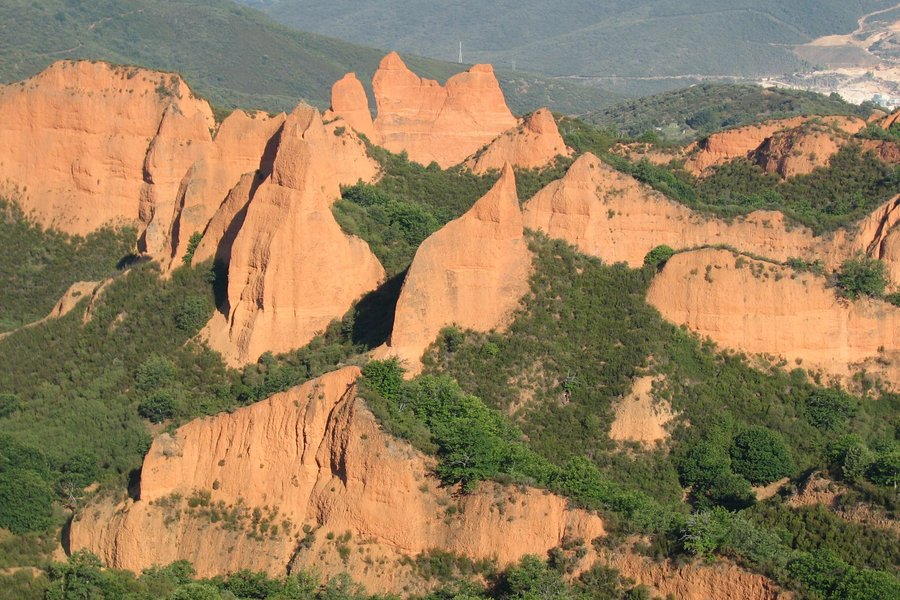
This is the most amazing site, and the most impressive landscape I have seen. The sheer size of the undertaking defies the imagination when one thinks of the tools available in those far off days.
Wear good shoes and take plenty of water, although there is a spring just before you start the last slog up to the Mirador. There is a good small restaurant when you get back down, and it took me about three hours to get to the top and back via the mines. You don't have to go to the top though, just walking through the mines is a visual treat and a great experience. The infrastructure is basic, but that's part of the charm. Entry was free, but the walk through the forrest of giant chestnut trees that have grown over the old mine workings would be well worth paying for. I can only hope that all our abandoned industrial sites will look as beautiful in the distant future.
I cannot imagine anyone being disappointed with their visit or leaving Las Medulas without asking themselves some very profound questions about the history of man.
Keep reading 0 comments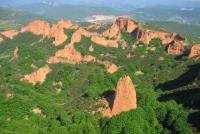
We visited Las Medulas in May 2005, but used a car to drive up and around the site. If the weather is dry, a normal car would do, you don't need a 4WD. Using the car gave us a bit more time to look at the site from various different angles and to stroll around. It is absolutely stunning that this moon-like landscape has been created by humans with hardly any heavy tool available to them.
From the top you can also see quite a number of little lakes, which are the remains of redirected rivers used to wash out the gold deposits.
An absolutely fascinating landscape.
Keep reading 0 comments
